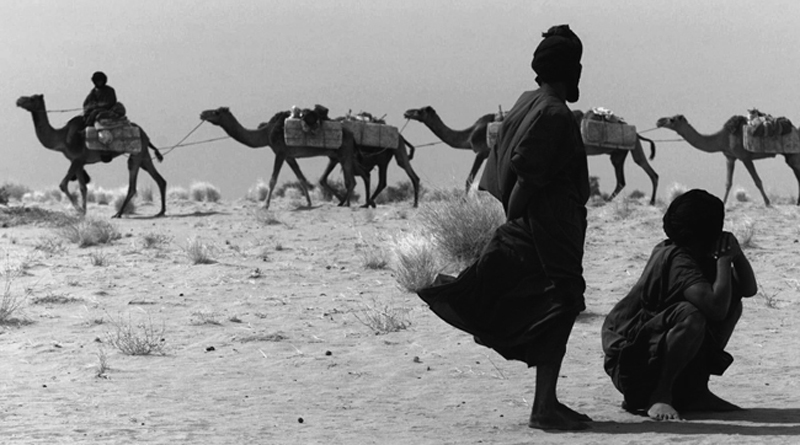Attempts by the East and the West to compete for traffic through the Suez Canal never stopped. If those attempts were dominated by trade interests and to bring closer distances between the goods and their customers, yet they were not void of political shrewdness and willingness to downplay the canal, as from time to time talks escalate over the years on alternative regional or international projects.
In order to understand the mystery of the recent regional, international and domestic escalation on Egypt, we must understand what the duplication of navigation through the Suez Canal has botched as regards schemes to bring the Egyptian economy to its knees.
Israel has not feared for many years attempts to find an alternative commercial corridor to the Suez Canal, as Israeli advanced research bodies have more than once presented research projects and studies of them, including a study by Tel Aviv University on the need to find a way to transfer between 70 to 80 tons of oil via the Aqaba-Eilat road, a figure that exceeds the oil that passes through the Suez Canal, which is not more than 40 million tons per year. The figure represents around 27% of the size of the canal revenues.
This study was not the first of its kind and will not be the last. The Israeli Ormandha Miller Foundation funded another confidential study that defined five alternative areas to pump oil to the world through establishing a 950km pipeline that reaches the port of Aqaba and another 1550km pipeline that extends to Ras Tanura in addition to a third pipeline from Kuwait, a fourth from Qatar and a fifth from Oman. They all lead to Israel.
The study showed that the cost of these pipelines will not exceed more than EGP 1.8 billion, a figure much lower than the costs of setting up giant oil tankers which hit around USD 125 million.
Since the first spark of the January 25 Revolution, Israel has worked through its various security and economic bodies in full swing to boost and revive a number of giant projects that aim to strike a fatal blow to the Egyptian economy and development projects in the Suez Canal area and Sinai, taking advantage of the absence of internal stability which Egypt experienced.
Two Seas canal
Israeli moves were noticed at the international level to fund a new project to link the Red Sea and the Dead Sea to become an alternative waterway to the Suez Canal on the one hand and a tourist attraction that pulls the rug from Sinai, as being an international tourist destination, on the other hand.
Presenting the Israeli project once again aimed to deal a fatal blow to the Egyptian economy by diverting the international navigation line from the Suez Canal to Israel. This came after former Israeli minister of regional cooperation Silvan Shalom asked the World Bank for a loan to finance the canal project which connects the Red Sea and the Dead Sea.
According to Israeli sources, the canal project is a joint venture between Jordan, Israel and the Palestinian Authority. The majority of the project was to be implemented on the Jordanian territories and the World Bank was to finance the first phase of the project which is estimated at 10% of it.
Truth Unveiled
The known beginning of the idea was during the Earth Summit on Sustainable Development 13 years ago in Johannesburg, South Africa, after Jordan and Israel presented the details of the project at the conference as a joint regional venture whose costs exceed USD 15 billion to be partially provided by the World Bank. The bulk of the funding comes from the US over three phases. The first phase will be extending a 180-km pipeline from the Red Sea to the Dead Sea to pump 1,900 million cubic meters of sea water from the Red Sea to the Dead Sea to compensate for water losses from the Dead Sea.
The second phase will make use of the powerful rush of water to generate energy necessary for the desalination of sea water. The third stage is to transfer drinking water to Israeli, Jordanian and Palestinian cities.
Despite the glittering image of this project, yet Israel’s overlooking of clear scientific facts raises big question marks about its adherence to the project of transferring the Red Sea water to the Dead Sea, instead of the water of the Mediterranean water to it. Scientific facts confirm that the transfer of the Mediterranean water is more feasible and economical and, therefore, Israel’s insistence on the implementation of the project to dig the canal from the Red Sea to the Dead Sea, despite the enormous difficulties, asserted the conspiracy theory in this project. It also confirmed that Israel has clear unannounced objectives for the project, especially as it has been associated with other Israeli successively disclosed projects.
In addition to the announcement by the Israeli Minister of Transportation in February 2007 on the agreement reached with Jordan on the establishment of a railway road running from Israel to Iraq and the Gulf states, and the establishment of the regional transport system with Israel as its main axis.
This project aims to turn the ports of Haifa and Ashdod, on the Mediterranean, into a gateway to the east, as stated by the Israeli minister, through an ambitious programme that has already started to expand the infrastructure of the two ports.
The project entails the establishment of a more advanced railway road between Haifa, Afoula and Bisan that connects with the Jordanian railway in Sheikh Hassan crossing area and from there to Iraq and from Iraq to the Gulf region by reviving some parts of the old Hejaz railway road. The goal is clear, which is to transfer goods coming from various world countries north of the Mediterranean to that region from Israel’s ports on the Mediterranean to Iraq and the Gulf states via Jordan. According to studies of the projects, this will save thousands of kilometres on the road of these goods through the Suez Canal and turn around the Arabian Peninsula at much less expenses. Jordan’s response to the Israeli scheme was linked with the proceeds and benefits that would be pumped by the project, which are highly needed by the Jordanian economy. Needless to say, the project carried risks to the Suez Canal revenues and, therefore, the Egyptian economy.
Egypt’s economic map is expected to change by a coup de maître from President Abdel Fattah El-Sisi whose features appeared through a number of major projects, which will begin tomorrow with the opening of the New Suez Canal project. It is expected after the opening the arrival of large foreign investments, mainly heavy industries in the canal axis. However, the entry of these foreign investments to Egypt requires re-filtering current laws and legislation, with the activation of the one-stop-shop mechanism of the new investment law within 18 months from now, so that Egypt can harvest the results of the success of the economic conference in Sharm El-Sheikh at the end of the year by signing a number of major projects. The opening of the new canal in expected to double the annual income of Egypt in general and the canal in particular, especially from $ 5.3 billion to $ 13.2 billion, as well as the doubling of services provided to the world trade, thanks to the increase in the number of boats to 97 per day.















